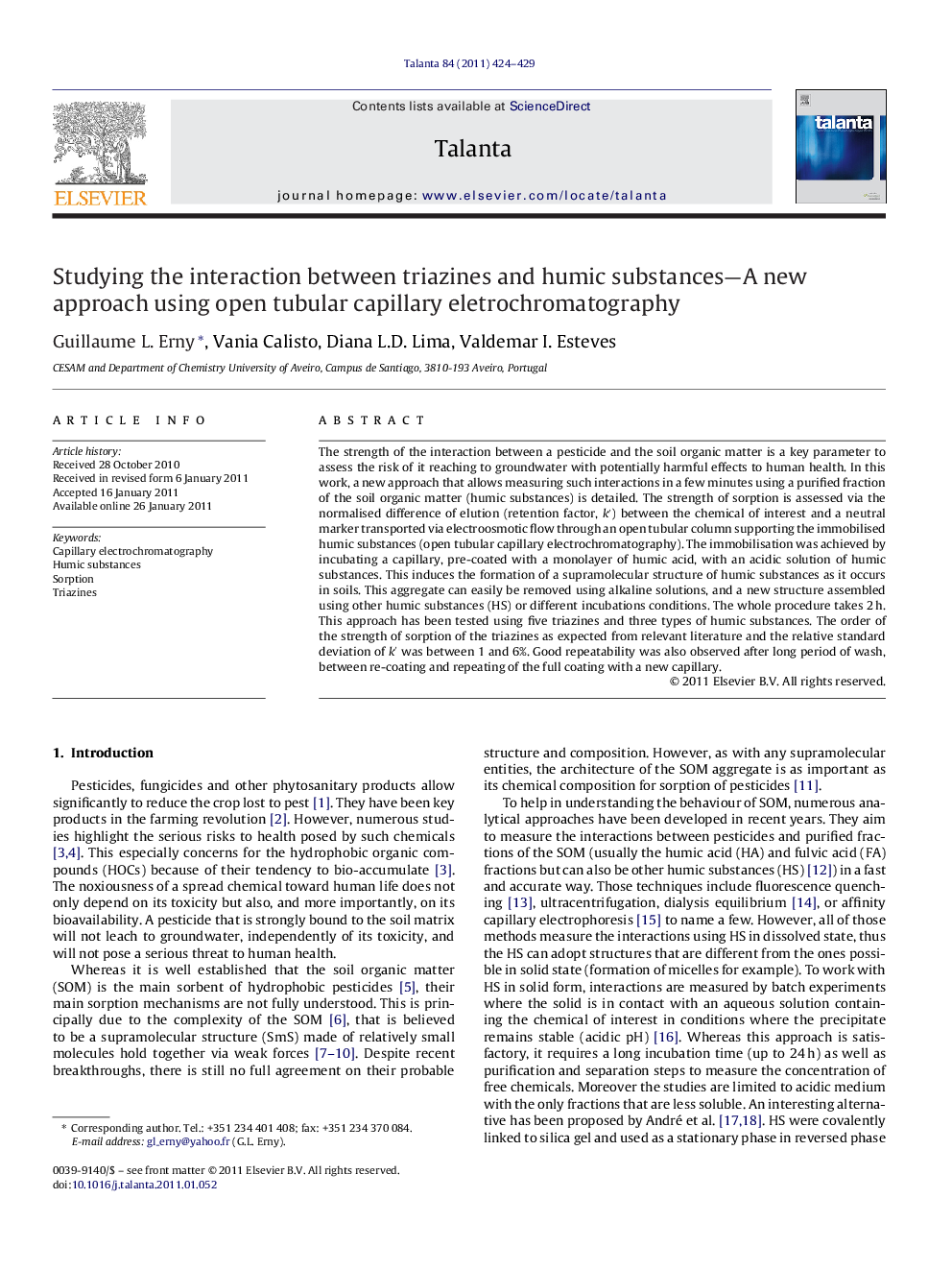| Article ID | Journal | Published Year | Pages | File Type |
|---|---|---|---|---|
| 10560140 | Talanta | 2011 | 6 Pages |
Abstract
The strength of the interaction between a pesticide and the soil organic matter is a key parameter to assess the risk of it reaching to groundwater with potentially harmful effects to human health. In this work, a new approach that allows measuring such interactions in a few minutes using a purified fraction of the soil organic matter (humic substances) is detailed. The strength of sorption is assessed via the normalised difference of elution (retention factor, kâ²) between the chemical of interest and a neutral marker transported via electroosmotic flow through an open tubular column supporting the immobilised humic substances (open tubular capillary electrochromatography). The immobilisation was achieved by incubating a capillary, pre-coated with a monolayer of humic acid, with an acidic solution of humic substances. This induces the formation of a supramolecular structure of humic substances as it occurs in soils. This aggregate can easily be removed using alkaline solutions, and a new structure assembled using other humic substances (HS) or different incubations conditions. The whole procedure takes 2Â h. This approach has been tested using five triazines and three types of humic substances. The order of the strength of sorption of the triazines as expected from relevant literature and the relative standard deviation of kâ² was between 1 and 6%. Good repeatability was also observed after long period of wash, between re-coating and repeating of the full coating with a new capillary.
Related Topics
Physical Sciences and Engineering
Chemistry
Analytical Chemistry
Authors
Guillaume L. Erny, Vania Calisto, Diana L.D. Lima, Valdemar I. Esteves,
